Ah, summer in the Philippines. That's when my Lola and I would spend lazy afternoons making bukayo, turning fresh young coconuts into these irresistible chewy candies. It's the perfect time to make them since young coconuts are abundant and especially sweet during these months.
While other kids would be running around playing tumbang preso or patintero, I'd be in the kitchen watching the coconut strips turn golden brown, sneaking tastes of the warm, caramelized pieces before they even had a chance to set.
Let me show you how we make this classic Filipino sweet that's been bringing smiles to faces for generations.
Cultural Notes
Bukayo is more than just a sweet treat in Filipino culture, it's a testament to the resourcefulness of Filipino cooks who created delicious delicacies from abundant local ingredients. In Lingayen, Pangasinan, where this recipe originated, bukayo-making is considered an art form passed down through generations.
Jump to:
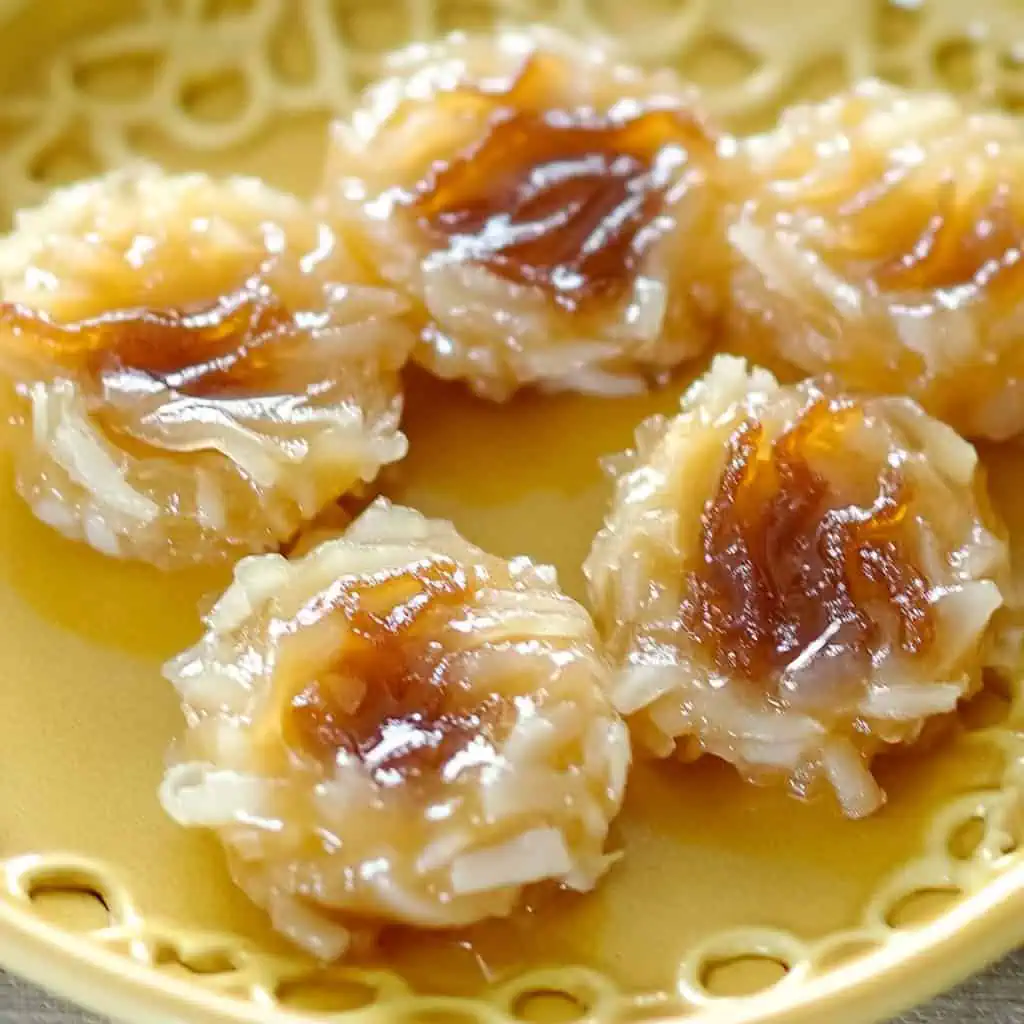
Why You'll Love This Recipe
- Authentic Filipino flavors passed down through generations
- Made with natural ingredients and less sugar than traditional versions
- Perfect balance of chewy and sweet textures
- Great make-ahead treat for special occasions
- Can be customized with different shapes and flavors
- Makes a thoughtful homemade gift
Ingredients
This recipe relies on young coconuts for their tender, sweet meat that creates the perfect chewy texture. Brown sugar develops a rich caramel flavor while binding everything together. Cornstarch acts as a natural thickener, ensuring your bukayo holds its shape.
The coconut's own water adds natural sweetness and perfect moisture, while pandan leaves introduce a subtle tropical aroma that enhances the coconut without overpowering it.
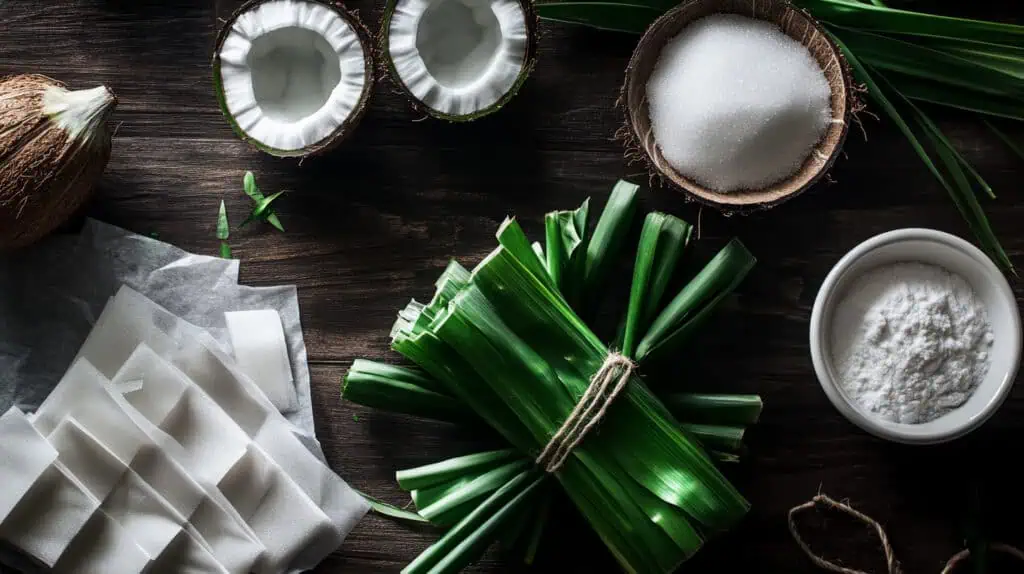
- 3 young coconuts (buko) - The star ingredient providing natural sweetness and chewy texture
- 2½ cups tightly packed brown sugar (asukal na pula) - Creates the caramel-like flavor and helps bind the coconut
- 1 tablespoon cornstarch - Improves texture and helps the mixture hold its shape
- Small amount of cooking oil (mantika) - Prevents sticking and assists with proper browning
- Reserved coconut water (tubig ng buko) - Adds natural sweetness and helps achieve the perfect consistency
- 1 knot pandan leaves (dahon ng pandan) - Infuses the candy with a subtle aromatic flavor
Equipment
- Wok or heavy-bottomed pan (kawali) - For even heat distribution and proper caramelization of the coconut and sugar mixture
- Coconut grater (kudkuran) - Creates uniform coconut strips that cook evenly
- Wooden spoon (sandok na kahoy) - For stirring without scratching the pan and maintaining even heat distribution
- Measuring cups and spoons (Panukat) - Ensures precise measurements for consistent results
- Heat-resistant spatula - Helps scrape the sides of the pan and prevent burning
- Wax paper or silicone mat - Provides non-stick surface for shaping and cooling the bukayo
- Small ice cream scoop or spoon - Creates uniformly sized bukayo pieces
- Airtight container - Preserves freshness and prevents bukayo from hardening too quickly
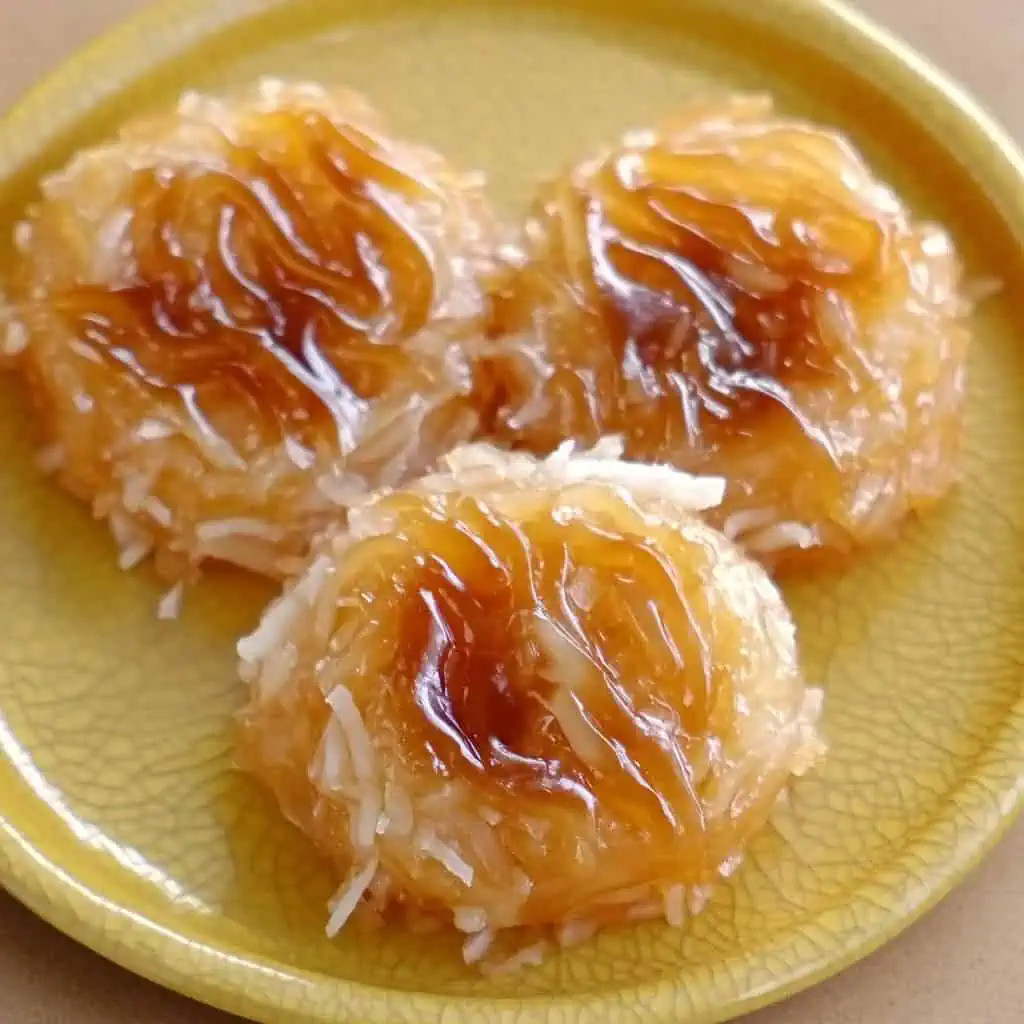
How To Make
- First, carefully cut your young coconuts in half and save all the coconut water by straining it into a clean bowl. You'll need this water later.
- Using your coconut grater (kudkuran), grate all the coconut meat into long, thin strips. Try to keep the strips even in size so they'll cook uniformly. Set these strips aside.
- Heat your wok or heavy pan over medium heat (around 350°F/180°C). Add just a small amount of oil, enough to coat the bottom of the pan. Add your coconut strips and cook them until they turn slightly golden brown, stirring often so they don't burn. Once lightly toasted, remove them from the heat and set aside.
- In the same wok, combine 1 cup of your saved coconut water with the brown sugar. Turn the heat to high and bring it to a boil, then reduce to medium heat. Let it cook until it becomes thick like syrup (about 10-15 minutes).
- While the syrup is cooking, mix your cornstarch with ¼ cup of the remaining coconut water in a small bowl. Stir until there are no lumps. Set this mixture aside.
- Once your syrup is thick, return your toasted coconut strips to the wok and stir everything together. Pour in your cornstarch mixture and keep cooking over medium heat. Stir constantly to prevent sticking. You'll know it's ready when you can scoop up some mixture and it holds its shape firmly (about 10-15 minutes).
- Reduce the heat to low. Using a spoon, scoop out portions of the mixture and place them on wax paper. Shape each portion into a circle while it's still warm. You can wet your hands slightly to prevent sticking if needed.
- Let your bukayo cool completely at room temperature. This will take about 1-2 hours. Once cooled, they should be firm but still slightly chewy.
- Store your bukayo in an airtight container at room temperature for up to a week, or in the refrigerator for up to two weeks. If they get too hard, just warm them briefly in the microwave for 5-10 seconds before eating.
Remember: If at any point your mixture becomes too dry while cooking, you can add a little more coconut water, one tablespoon at a time. If it's too wet, just cook it a bit longer until it reaches the right consistency.

Tips from Lola's Kitchen
- Select coconuts carefully: Look for young coconuts with soft, jelly-like meat. When shaken, they should have plenty of water inside.
- Consistent size matters: Cut coconut strips to similar thickness for even cooking and better texture.
- Slow and steady wins: Cook over medium heat throughout the process to avoid burning the sugar or coconut.
- The spoon test: Drop a small amount of mixture on a cold plate. If it firms up and doesn't spread, it's ready.
- Wet your tools: Lightly dampen your hands and scooping tools with water to prevent sticking when shaping.
- Add pandan early: For maximum flavor infusion, add the pandan leaves when making the sugar syrup.
- Rest period: Allow bukayo to cool completely (at least 2 hours) before storing to achieve the perfect texture.
- Watch the temperature: If your kitchen is very hot, refrigerate bukayo after cooling to maintain its shape.
- Save extra coconut water: Freeze any unused coconut water for smoothies or other recipes.
- Traditional touch: For authentic presentation, shape bukayo into small pyramids instead of rounds.
Substitutions
- Brown Sugar: Can use muscovado sugar for deeper molasses flavor, or coconut sugar for a more caramel-like taste. Reduce quantity by ¼ cup if using these more intense sweeteners.
- Cornstarch: Arrowroot powder works as a 1:1 replacement. Rice flour can also work (use 1½ tablespoons instead).
- Pandan Leaves: If unavailable, use 1 teaspoon vanilla extract or ½ teaspoon pandan extract added at the final cooking stage.
- Young Coconut: In a pinch, use mature coconut meat, but add ¼ cup coconut milk to compensate for the moisture difference.
- Coconut Water: If you don't have enough from your coconuts, use store-bought coconut water (unsweetened).
- Cooking Oil: Coconut oil makes an excellent substitute that enhances the coconut flavor.
- Tools: No coconut grater? A vegetable peeler can create thin strips, or use a box grater's largest holes.
Troubleshooting
- Mixture too sticky and won't set: Cooked too little or too much moisture. Solution: Return to pan and cook 5-7 minutes longer, stirring constantly.
- Bukayo too hard and brittle: Overcooked or sugar crystallized. Solution: Add 1-2 tablespoons coconut water, reheat gently until just pliable again.
- Uneven coloring: Heat distribution problem. Solution: Use a heavier pan and stir more frequently, rotating pan occasionally.
- Grainy texture: Sugar crystallized. Solution: Add a splash of coconut water and reheat slowly while stirring until smooth.
- Burning during cooking: Heat too high. Solution: Lower heat immediately, remove from heat briefly if needed, and continue cooking at lower temperature.
- Won't hold shape when scooped: Mixture too thin. Solution: Cook 3-5 minutes longer or add ½ teaspoon additional cornstarch mixed with water.
- Bland flavor: Insufficient toasting. Solution: Next time, toast coconut longer for more pronounced flavor.
- Turns chewy too quickly after cooling: Too much sugar. Solution: Reduce sugar by ¼ cup in your next batch.
Storage & Reheating
- Room temperature: Store in airtight container lined with wax paper for up to 7 days. Ideal in cool, dry conditions.
- Refrigeration: Can be refrigerated for up to 2 weeks. Place in container with layers separated by wax paper to prevent sticking.
- Freezing: Place in freezer-safe container with wax paper between layers for up to 2 months. Thaw in refrigerator.
- Softening: If bukayo becomes too firm, microwave for 5-10 seconds or leave at room temperature for 30 minutes before serving.
- Refreshing: To revive texture after storage, warm in a 250°F oven for 3-5 minutes, then cool completely.
- Moisture control: In humid climates, add a food-grade silica packet to your storage container to maintain freshness.
- Gift packaging: For gifting, wrap individually in small squares of wax paper, then place in decorative tin or box.

FAQ
Why is my bukayo not hardening?
The mixture needs to be cooked until it reaches the right consistency. Test by dropping a small amount on wax paper - it should hold its shape within 30 seconds. If not, continue cooking while stirring constantly.
Can I use desiccated coconut instead of fresh?
Fresh coconut is strongly recommended for authentic texture and flavor. If you must use desiccated coconut, rehydrate it first by soaking in warm coconut milk for 30 minutes, then drain well before using.
How do I know when the coconut is perfectly toasted?
Look for a light golden-brown color and a fragrant aroma. The edges should start to curl slightly, and you'll notice a distinct coconut scent. Don't over-toast as it can become bitter.
Can I make this ahead for a party?
Yes! Make up to 3 days ahead and store in an airtight container at room temperature. For best freshness, keep in a cool, dry place away from direct sunlight.
How can I make it less sweet?
Reduce sugar to 2 cups and increase cornstarch to 1½ tablespoons to maintain texture. You can also add a pinch of salt to balance the sweetness.
Is this recipe gluten-free?
Yes, this traditional bukayo recipe is naturally gluten-free, making it suitable for those with gluten sensitivities.
Can I add other flavors to bukayo?
Absolutely! Try adding vanilla, cinnamon, or a small amount of citrus zest. Just add these flavors toward the end of cooking to preserve their aroma.
Why did my bukayo mixture separate during cooking?
This happens when the heat is too high or stirring is inconsistent. Lower the heat and stir continuously, especially after adding the cornstarch mixture.
How do I get consistent sizes for each piece?
Use a small ice cream scoop, tablespoon measure, or cookie scoop to portion the mixture evenly before shaping.
Can children help make this recipe?
Children can help with measuring ingredients and shaping the cooled bukayo, but adult supervision is needed for the cooking steps due to the hot sugar mixture.
Related
Looking for other recipes like this? Try these:
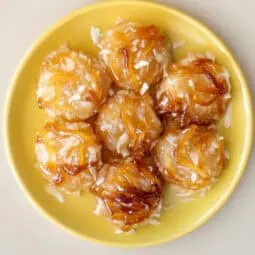
Traditional Filipino Bukayo Recipe (Coconut Candy)
Equipment
- Wok or heavy-bottomed pan (kawali) For even heat distribution and caramelization
- Coconut grater (kudkuran) For creating uniform coconut strips
- Wooden spoon (sandok na kahoy) For stirring without scratching the pan
- Measuring cups and spoons (Panukat) For precise measurements of ingredients
- Heat-resistant spatula
- Wax paper or silicone mat
- Small ice cream scoop or spoon For shaping
- Airtight container For storage
Ingredients
- 3 young coconuts buko
- 2½ cups tightly packed brown sugar asukal na pula
- 1 tablespoon cornstarch corn starch
- Small amount of cooking oil mantika
- Reserved coconut water tubig ng buko
- 1 knot pandan leaves dahon ng pandan
Instructions
- First, carefully cut your young coconuts in half and save all the coconut water by straining it into a clean bowl. You'll need this water later.
- Using your coconut grater (kudkuran), grate all the coconut meat into long, thin strips. Try to keep the strips even in size so they'll cook uniformly. Set these strips aside.
- Heat your wok or heavy pan over medium heat (around 350°F/180°C). Add just a small amount of oil, enough to coat the bottom of the pan. Add your coconut strips and cook them until they turn slightly golden brown, stirring often so they don't burn. Once lightly toasted, remove them from the heat and set aside.
- In the same wok, combine 1 cup of your saved coconut water with the brown sugar. Turn the heat to high and bring it to a boil, then reduce to medium heat. Let it cook until it becomes thick like syrup (about 10-15 minutes).
- While the syrup is cooking, mix your cornstarch with ¼ cup of the remaining coconut water in a small bowl. Stir until there are no lumps. Set this mixture aside.
- Once your syrup is thick, return your toasted coconut strips to the wok and stir everything together. Pour in your cornstarch mixture and keep cooking over medium heat. Stir constantly to prevent sticking. You'll know it's ready when you can scoop up some mixture and it holds its shape firmly (about 10-15 minutes).
- Reduce the heat to low. Using a spoon, scoop out portions of the mixture and place them on wax paper. Shape each portion into a circle while it's still warm. You can wet your hands slightly to prevent sticking if needed.
- Let your bukayo cool completely at room temperature. This will take about 1-2 hours. Once cooled, they should be firm but still slightly chewy.
- Store your bukayo in an airtight container at room temperature for up to a week, or in the refrigerator for up to two weeks. If they get too hard, just warm them briefly in the microwave for 5-10 seconds before eating.
- Remember: If at any point your mixture becomes too dry while cooking, you can add a little more coconut water, one tablespoon at a time. If it's too wet, just cook it a bit longer until it reaches the right consistency.
Tips from Lola's Kitchen
- Use young coconuts (buko) for the best texture and flavor
- Toast the coconut strips slowly for even browning
- The mixture is ready when it holds its shape when dropped on wax paper
- Wet your hands slightly when shaping to prevent sticking
- Add the pandan leaves early for more fragrant bukayo
Nutrition
The Story Behind Bukayo
Deep in the coastal town of Lingayen, Pangasinan, bukayo emerged as a testament to Filipino ingenuity and resourcefulness. This cherished coconut candy has been a cornerstone of Pangasinense culinary heritage for generations, born from the region's abundant coconut harvests and the creative spirit of local families.
The story of bukayo is intertwined with Lingayen's rich agricultural history, where coconut trees line the shores and dot the landscapes. Local storytellers say the recipe was developed by industrious home cooks who sought ways to preserve the bountiful coconut harvest while creating something delightful for their families. What began as a practical solution evolved into an treasured delicacy that would be passed down through generations of Filipino families.
Traditional bukayo-making was, and still is, a labor of love. In the early days, families would gather under the shade of coconut trees during harvest season, with children helping to grate fresh coconuts using hand-carved kudkuran (traditional coconut graters). The process of transforming simple coconut strips into golden, chewy candies became a cherished ritual that strengthened family bonds and community ties.
Unlike many Filipino kakanin (rice-based snacks) that require complex preparations, bukayo's beauty lies in its simplicity. The recipe showcases the natural sweetness of young coconuts, enhanced by muscovado sugar – another local product that Pangasinan was known for. This combination creates a distinct caramel flavor that sets bukayo apart from other coconut-based Filipino desserts like maja blanca or buko pandan.
Today, bukayo continues to be a proud representation of Pangasinan's culinary excellence. While the recipe has been adapted over time – with some versions adding modern touches like cornstarch for better texture or pandan leaves for enhanced aroma – the heart of this beloved treat remains unchanged. You'll find bukayo being sold in local markets, featured in food festivals, and most importantly, still being made in countless Filipino kitchens, where each family adds their own special touch to this enduring piece of Philippine food heritage.
In recent years, bukayo has gained recognition beyond Pangasinan's borders, becoming a sought-after pasalubong (homecoming gift) and a symbol of Filipino sweet-making expertise. Its growing popularity has led to various interpretations across different regions, but true bukayo enthusiasts know that the best versions still come from the skilled hands of Lingayen's home cooks, who maintain the perfect balance of ingredients and technique that has made this treat beloved for generations.
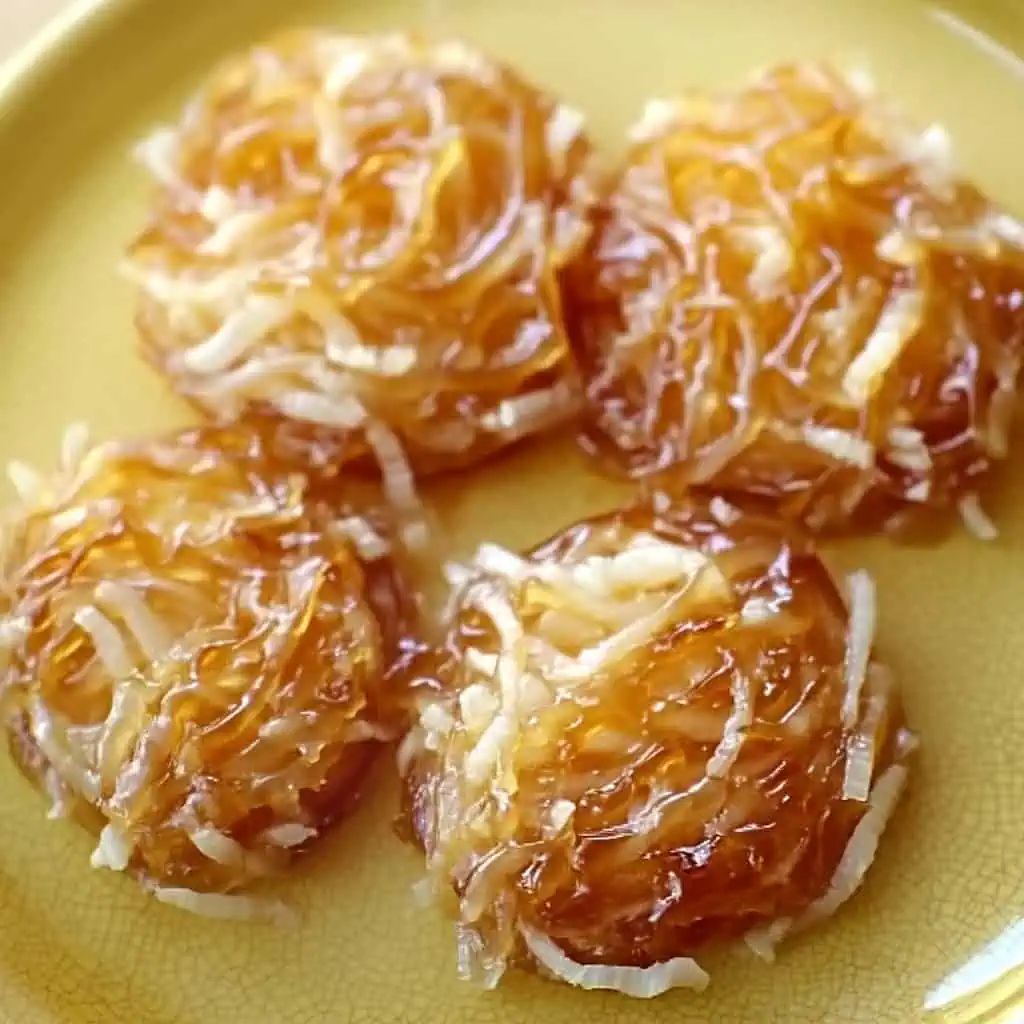






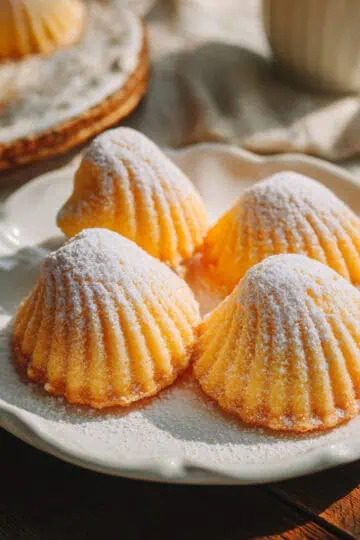
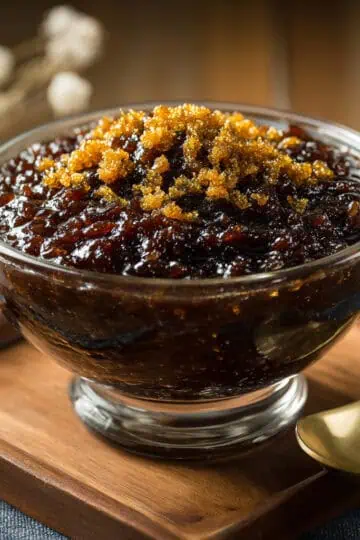
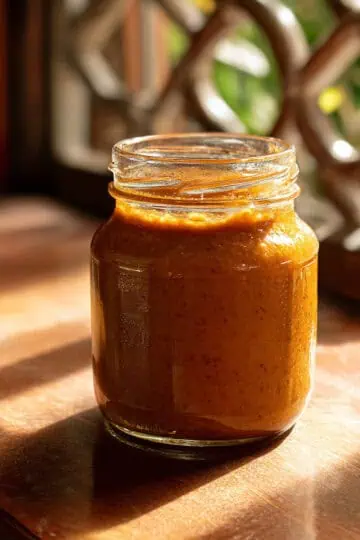
Comments
No Comments